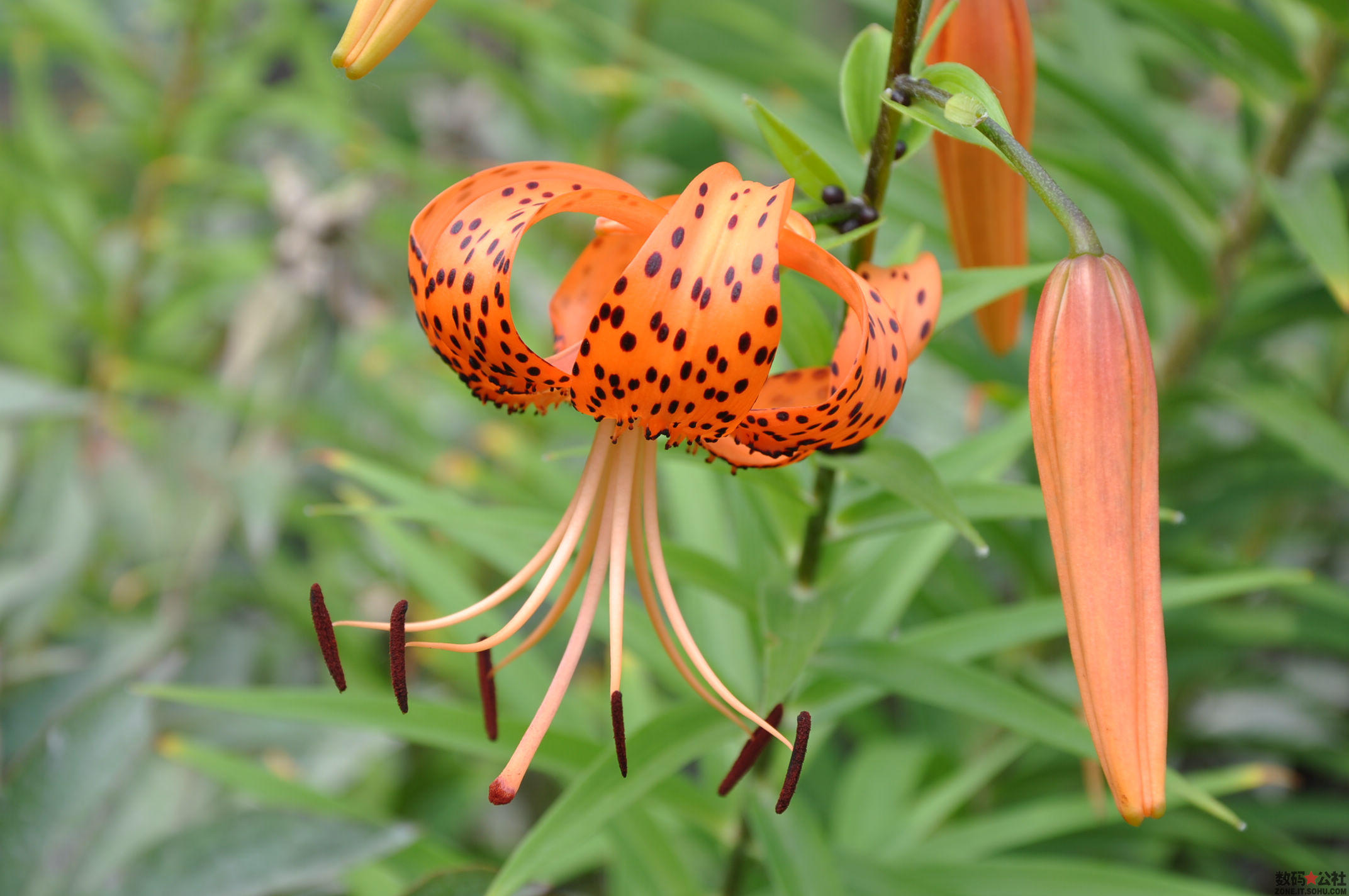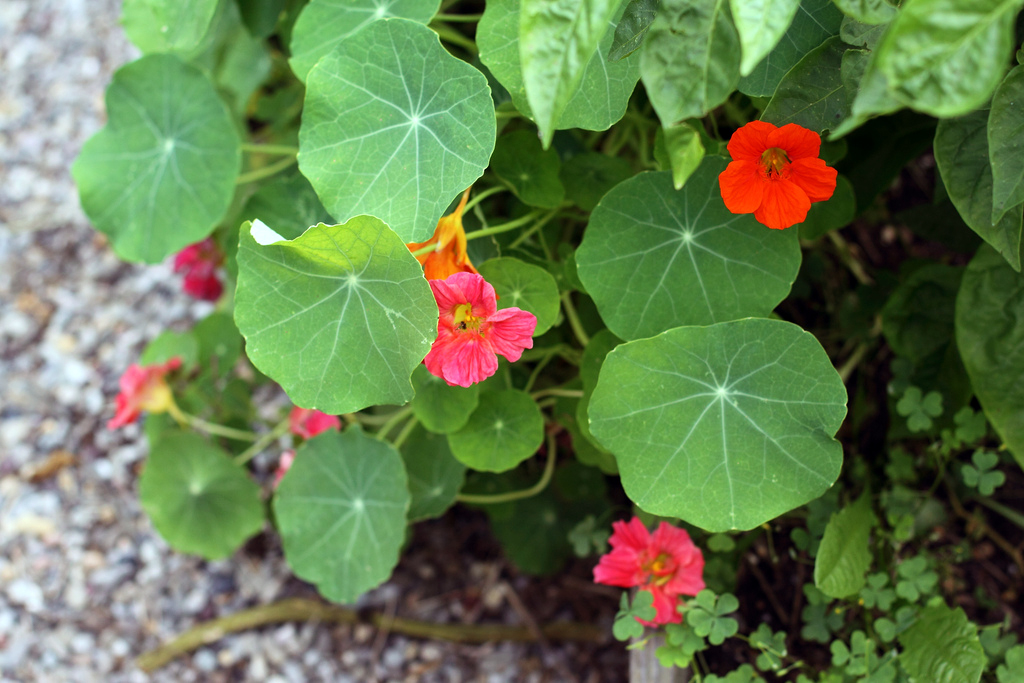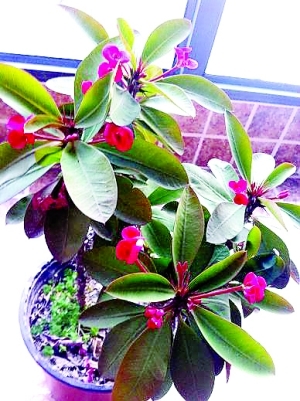Culture methods and matters needing attention of Lilium lily
The lily lily is known as Curly Dan, inverted lotus, tiger skin lily, perennial herbaceous bulbous plant. Like warm, dry climate conditions, but also more resistant to sunlight. It grows luxuriantly in fertile sandy soil rich in humus and well-drained soil, with well-developed bulbs and colorful flowers. Suitable for nitrogen fertilizer, bean cake, vegetable cake, farm compost and nitrogen, phosphorus, potassium compound fertilizer are the best.
In the growing period, it is necessary to loosen the soil, weed, combined with watering and fertilization for mid-ploughing. In order to promote the growth and development of seedlings, diluted liquid fertilizer 2Mel was applied 3 times during the growing period. When the bud is about to blossom, apply 1 Mel phosphorus and potassium fertilizer twice to ensure that the seedlings have sufficient nutrition in the bud and flowering stage, which can not only make the flowers large and bright, but also promote the development of bulbs.
The north should choose a sunny shelter, while the south can plant it in a slightly shaded place. The suitable planting time is from August to September. Apply sufficient base fertilizer one month before planting and turn the soil deeply. Compost and grass ash can be used as base fertilizer.
Potted plants should be carried out from September to October. The cultivated soil should be mixed with rotten leaf soil, sandy soil and garden soil at the ratio of 1:1:1, and the basin bottom should be fully mature compost and a small amount of bone powder as base fertilizer. The planting depth is about 2-3 times the diameter of the bulb.

Lilium lily does not have a high requirement for fertilizer, and it is usually appropriate to apply fertilizer at the beginning of spring growth and early flowering. Some foreign growers believe that lilies need more nitrogen and potassium fertilizer, and should be applied every 10-15 days during the growing period, while the supply of phosphate fertilizer should be limited, because too much phosphate fertilizer will cause withered and yellow leaves. Phosphate fertilizer can be increased by 1-2 days at flowering stage.
In order to enrich the bulb, the residual flowers should be cut off in time after flowering to reduce nutrient consumption. Watering only needs to keep the pot soil moist, but it should be watered properly during the peak growing season and dry weather, and often drink around the flowerpot to improve air humidity. Pot soil should not be too wet, otherwise bulbs are easy to rot, potted lilies change pots once a year and replace them with new culture soil and base fertilizer. In addition, the flowerpot will be turned once a week during the growing period. Otherwise, the plant is easy to be too long, affecting the appearance.
Culture methods and matters needing attention of Lilium lily
Culture methods of Lilium lilies
It grows luxuriantly in fertile sandy soil rich in humus and well-drained soil, with well-developed bulbs and colorful flowers. Suitable for nitrogen fertilizer, bean cake, vegetable cake, farm compost and nitrogen, phosphorus, potassium compound fertilizer are the best.
In the growing period, it is necessary to loosen the soil, weed, combined with watering and fertilization for mid-ploughing. Generally, diluted liquid fertilizer was applied 3 times during the growing period to promote the growth and development of the seedlings. When the bud is about to blossom, apply 1 Mel phosphorus and potassium fertilizer twice to ensure that the seedlings have sufficient nutrition in the bud and flowering stage, which can not only make the flowers large and bright, but also promote the development of bulbs.
The north should choose a sunny shelter, while the south can plant it in a slightly shaded place. The suitable planting time is from August to September. Apply enough base fertilizer one month before planting and turn the soil deeply. Compost and plant ash can be used as base fertilizer.
Potted plants should be carried out from September to October. The cultivated soil should be mixed with rotten leaf soil, sandy soil and garden soil at the ratio of 1:1:1, and the basin bottom should be fully mature compost and a small amount of bone powder as base fertilizer. The planting depth is generally about 2-3 times the diameter of the bulb.
Matters needing attention in lily culture
Lilium lily does not have a high requirement for fertilizer, and it is usually appropriate to apply fertilizer at the beginning of spring growth and early flowering. Some foreign growers believe that lilies need more nitrogen and potassium fertilizer and should be applied every 10-15 days during the growing period, while the supply of phosphate fertilizer should be limited, because too much phosphate fertilizer will cause withered and yellow leaves. Phosphate fertilizer can be increased by 1-2 days at flowering stage.
In order to enrich the bulb, the residual flowers should be cut off in time after flowering to reduce nutrient consumption. Watering only needs to keep the pot soil moist, but it should be watered properly during the peak growing season and dry weather, and often sprinkle water around the flowerpot to improve air humidity. Pot soil should not be too wet, otherwise bulbs are easy to rot, potted lilies change pots once a year and replace them with new culture soil and base fertilizer. In addition, the flowerpot should be turned once a week during the growing period. Otherwise, the plant is easy to be too long, affecting the appearance.
How to raise lilies, breeding methods and precautions / sufficient light of lilies
Lily is a kind of common flower plant in the world, which can be seen in many parts of our country, but if we want to raise it well, there are many places we need to pay attention to. How to raise lily? What are the breeding methods and matters needing attention of lilies? Next, the editor will take you to learn about it.
First, how to raise lilies and understand their habits
If we want to know how to raise lilies, we must first understand its growth habits. This plant is more light-loving, so we should keep it in sufficient light when we breed it. In addition, daily water and fertilizer management is also a point we need to pay attention to. Details are introduced below, let's take a look.
2. Culture methods and matters needing attention of Lilium lilium
1. Humus soil
Before we breed the lily, we first need to choose the soil, which is a step to lay a good foundation, which is very important. Generally, it is best to choose loose and fertile humus soil, which is rich in nutrients and has good drainage and air permeability. can let the plant better absorb nutrients, but also not prone to the phenomenon of stagnant water.
two。 Fertilization, once every 10-15 days
Fertilizer is one of the main nutrients in the growth process of lily, especially after entering its growth period, its demand for fertilizer is very high, basically every 10-15 days we need to apply fertilizer, so that the plant will thrive. However, when applying fertilizer, we should pay attention to that the fertilizer must be diluted before release, because if the concentration is too high, it is easy to burn the plant.
3. Moisture, avoid stagnant water
This kind of plant likes to grow in a warm and humid environment, so in the process of its growth, we should water frequently to keep the soil moist, so that the plant will grow better, but we should also pay attention to control the amount of water. Irrigate not too much, because this plant is afraid of waterlogging, if stagnant water is very easy to cause root rot.
4. Light, summer shade
Curly lily likes to grow in an environment with plenty of sunlight, but it is not resistant to strong light. if it is suitable for sunshine in spring and autumn, we can breed it outdoors and let it receive light all day, but after entering summer, because the light is relatively strong, we should still pay attention to shade to avoid strong light to burn the plant.
5. Pruning, pruning
In the process of breeding lily, we also need to prune it regularly and turn the basin in early spring and late autumn. Growers can combine turning the pot to arrange the roots of plants and trim branches. this can be conducive to the ventilation and light transmission of the plant, make the plant look more beautiful, and promote branching.
6. Timely prevention and control of diseases and insect pests
In the process of the growth of Lilium lily, if we are not careful enough, it is easy to let diseases and insect pests enter while we are not careful. This kind of problem is very harmful to the plant, so we must deal with it in time. For specific treatment methods, you can refer to the article on pest control of Lilium lily, in which there is detailed teaching.
- Prev

Culture methods and matters needing attention of Clematis paniculata
Sowing time: March to June, called spring sowing. The florescence is from August to December. It is also possible to sow seeds in late August or early September in autumn, which is called autumn sowing. In this way, the dry lotus will blossom during New Year's Day and the Spring Festival. Sowing and raising seedlings: the optimum temperature for germination is 18-20 degrees. On demand, cover about 1 cm of soil, water thoroughly and keep moist
- Next

How to keep potted flowers warm in winter?
1. How to manage potted flowers in winter? Potted flowers in the north need to be moved indoors in early winter, and the location after entering the house should take into account the characteristics of all kinds of flowers. Therefore, we should pay attention to the following aspects: (1) the flowers that bloom in winter and spring and the warm flowers: such as crab claw orchid, cyclamen, camellia.
Related
- Fuxing push coffee new agricultural production and marketing class: lack of small-scale processing plants
- Jujube rice field leisure farm deep ploughing Yilan for five years to create a space for organic food and play
- Nongyu Farm-A trial of organic papaya for brave women with advanced technology
- Four points for attention in the prevention and control of diseases and insect pests of edible fungi
- How to add nutrient solution to Edible Fungi
- Is there any good way to control edible fungus mites?
- Open Inoculation Technology of Edible Fungi
- Is there any clever way to use fertilizer for edible fungus in winter?
- What agents are used to kill the pathogens of edible fungi in the mushroom shed?
- Rapid drying of Edible Fungi

